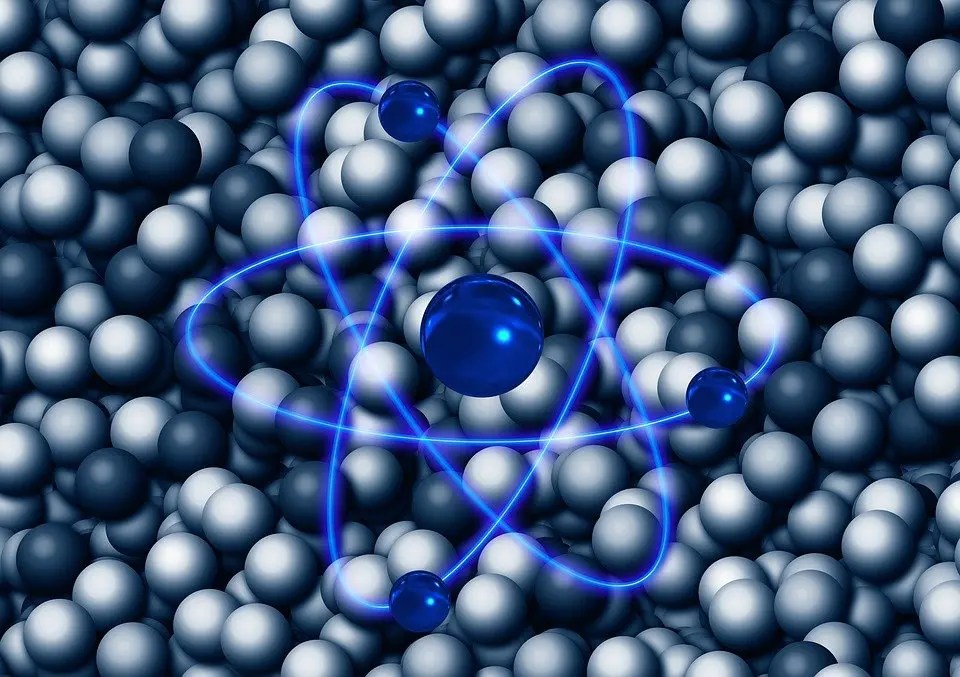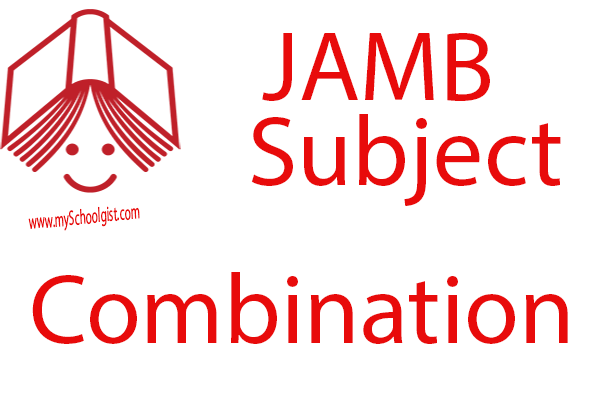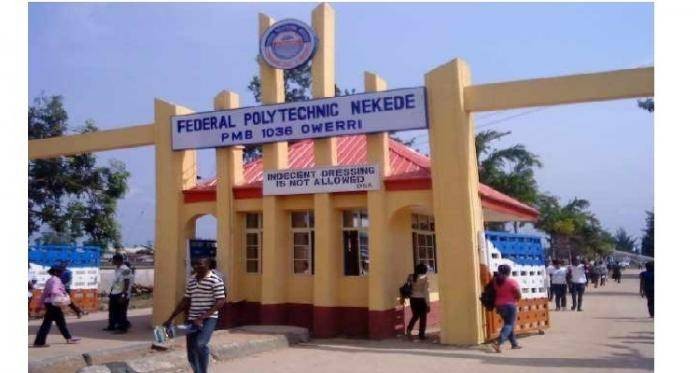
JAMB syllabus for Physics is for all candidates participating in the UTME Nigeria. All candidates are mandated to make use of this syllabus in preparation for JAMB. The continuous rise in the search for JAMB syllabus for Physics has been brought to our notice and we thought it necessary to come up with a comprehensive free PDF downloadable document that can be downloaded for your personal use and kept for future references. This JAMB syllabus is ideal for all students who are eligible to partake in the 2024/2025 UTME.
This post will educate all persons who wants to participate in JAMB this year, it provides in clear terms, what is expected by the Joint Admission and Matriculation Board as a body in preparing candidates for what is expected of you.
To further emphasize the importance of the subject matter, the JAMB syllabus is used as a guide as to what is likely to come out in your physics exam and how to put down your answers. It also indicates the marks allotted to each question and what the examiner wants from you.
The importance of this subject cannot be overemphasized, this is one of the few subjects that is required as an admission requirement for any Engineering, Medical or science related course in the University, Polytechnic or College of Education and of course, this information carries weight because it provides in full, details about the current JAMB syllabus for physics.
What You Stand To Gain from This Post
- The complete JAMB syllabus for physic.
- Marking Scheme for Physics in JAMB.
- How to answer Physics questions in your UTME.
- You will be able to sustain your interest in physics.
- You will develop attitude relevant to physics that encourage accuracy, precision and objectivity.
- You will be able to interpret physical phenomena, laws, definitions, concepts and other theories.
- Finally, demonstrate the ability to solve correctly physics problems using relevant theories and concepts.
JAMB SYLLABUS FOR PHYSICS UTME
Below is the table containing the approved physics syllabus for the forthcoming UTME. However, you can download the PDF file for free just below the table.
JAMB SYLLABUS FOR PHYSICS 2024/2025 Session
| TOPICS/CONTENTS/POINTS TO NOTE | OBJECTIVES |
| 1. MEASUREMENTS AND UNITS (a) Length, area and volume: Metre rule, Venier calipers Micrometer Screw-guage, measuring cylinder (b) Mass (i) unit of mass (ii) use of simple beam balance (iii) concept of beam balance (c) Time (i) unit of time (ii) time-measuring devices (d) Fundamental physical quantities | Candidates should be able to: i. identify the units of length, area and volume; ii. use different measuring instruments; iii. determine the lengths, surface areas and volume of regular and irregular bodies: iv. identify the unit of mass; v. use simple beam balance, e.g Buchart’s balance and chemical balance; vi. identify the unit of time; vii. use different time-measuring devices; viii. relate the fundamental physical quantities to their units; |
| TOPICS/CONTENTS/NOTES | OBJECTIVES |
| (e) Derived physical quantities and their units (i) Combinations of fundamental quantities and determination of their units (f) Dimensions (i) definition of dimensions (ii) simple examples (g) Limitations of experimental measurements (i) accuracy of measuring instruments (ii) simple estimation of errors. (iii) significant figures. (iv) standard form. (h) Measurement, position, distance and displacement (i) concept of displacement (ii) distinction between distance and displacement (iii) concept of position and coordinates (iv) frame of reference 2. Scalars and Vectors (i) definition of scalar and vector quantities (ii) examples of scalar and vector quantities (iii) relative velocity (iv) resolution of vectors into two perpendicular directions including graphical methods of solution. | ix. deduce the units of derived physical quantities; x. determine the dimensions of physical quantities; xi. use the dimensions to determine the units of physical quantities; xii. test the homogeneity of an equation; xiii. determine the accuracy of measuring instruments; xiv. estimate simple errors; xv. express measurements in standard form. Candidates should be able to: i. use strings, meter ruler and engineering calipers, vernier calipers and micrometer, screw guage ii. note the degree of accuracy iii. identify distance travel in a specified direction iv. use compass and protractor to locate points/directions v. use Cartesians systems to locate positions in x-y plane vi. plot graph and draw inference from the graph. Candidates should be able to: i. distinguish between scalar and vector quantities; ii. give examples of scalar and vector quantities; iii. determine the resultant of two or more vectors; iv. determine relative velocity; |
| TOPICS/CONTENTS/NOTES | OBJECTIVES |
| 3. Motion (a) Types of motion: translational, oscillatory, rotational, spin and random (b) Relative motion (c) causes of motion (d) Types of force
(e) linear motion
(f) Projectiles:
(g) Newton’s laws of motion:
| v. resolve vectors into two perpendicular components; vi. use graphical methods to solve vector problems; Candidates should be able to : i. identify different types of motion ; ii. solve numerical problem on collinear motion; iii. identify force as cause of motion; iv. identify push and pull as form of force v. identify electric and magnetic attractions, gravitational pull as forms of field forces; vi. differentiate between speed, velocity and acceleration; vii. deduce equations of uniformly accelerated motion; viii. solve problems of motion under gravity; ix. interpret distance-time graph and velocity-time graph; x. compute instantaneous velocity and acceleration xi. establish expressions for the range, maximum height and time of flight of projectiles; xii. solve problems involving projectile motion; xiii. solve numerical problems involving impulse and momentum; |
| TOPICS/CONTENTS/NOTES | OBJECTIVES |
(iv) force – time graph (v) conservation of linear momentum (Coefficient of restitution not necessary) (h) Motion in a circle:
4 Gravitational field
| xiv. interpretation of area under force – time graph xv. interpret Newton’s laws of motion; xvi. compare inertia, mass and force; xvii. deduce the relationship between mass and acceleration; xviii. interpret the law of conservation of linear momentum and application xix. establish expression for angular velocity, angular acceleration and centripetal force; xx. solve numerical problems involving motion in a circle; xxi. establish the relationship between period and frequency; xxii. analyze the energy changes occurring during S.H.M xxiii. identify different types of forced vibration xxiv. enumerate applications of resonance. Candidates should be able to: i. identify the expression for gravitational force between two bodies; ii. apply Newton’s law of universal gravitation; iii. give examples of conservative and non- conservative fields; iv. deduce the expression for gravitational field potentials; v. identify the causes of variation of g on the earth’s surface; vi. differentiate between mass and weight; vii. determine escape velocity |
| TOPICS/CONTENTS/NOTES | OBJECTIVES |
| 5. Equilibrium of Forces (a) equilibrium of particles:
(b) principles of moments (i) moment of a force (ii) simple treatment and moment of a couple (torgue) (iii) applications (c) conditions for equilibrium of rigid bodies under the action of parallel and non- parallel forces
(d) centre of gravity and stability (i) stable, unstable and neutral equilibra 6. (a) Work, Energy and Power
(b) Energy and society
| Candidates should be able to: i. apply the conditions for the equilibrium of coplanar forces to solve problems; ii. use triangle and polygon laws of forces to solve equilibrium problems; iii. use Lami’s theorem to solve problems; iv. analyze the principle of moment of a force; v. determine moment of a force and couple; vi. describe some applications of moment of a force and couple; vii. apply the conditions for the equilibrium of rigid bodies to solve problems; viii. resolve forces into two perpendicular directions; ix. determine the resultant and equilibrant of forces; x. differentiate between stable, unstable and neutral equilibra. Candidates should be able to: i. differentiate between work, energy and power; ii. compare different forms of energy, giving examples; iii. apply the principle of conservation of energy; iv. examine the transformation between different forms of energy; v. interpret the area under the force – distance curve. vi. solve numerical problems in work, energy and power. Candidates should be able to: i. Itemize the sources of energy ii. distinguish between renewable and non- renewable energy, examples should be given |
| TOPICS/CONTENTS/NOTES | OBJECTIVES |
(c) Dams and energy production
(d) nuclear energy (e) solar energy
7. Friction
8. Simple Machines
9. Elasticity
| iii. identify methods of energy transition iv. explain the importance of energy in the development of the society v. analyze the effect of energy use to the environment vi. identify the impact of energy on the environment vii. identify energy sources that are friendly or hazardous to the environment viii. identify energy uses in their immediate environment ix. suggests ways of safe energy use x. state different forms of energy conversion. Candidates should be able to: i. differentiate between static and dynamic friction ii. determine the coefficient of limiting friction; iii. compare the advantages and disadvantages of friction; iv. suggest ways by which friction can be reduced; v. analyze factors that affect viscosity and terminal velocity; vi. apply Stoke’s law. Candidates should be able to: i. identify different types of simple machines; ii. solve problems involving simple machines. Candidates should be able to: i. interpret force-extension curves; |
| TOPICS/CONTENTS/NOTES | OBJECTIVES |
10. Pressure (a) Atmospheric Pressure
(b) Pressure in liquids
11. Liquids At Rest
12. Temperature and Its Measurement
| ii. interpret Hooke’s law and Young’s modulus of a material; iii use spring balance to measure force; iv. determine the work done in spring and elastic strings Candidates should be able to: i. recognize the S.I units of pressure; (Pa) ii. identify pressure measuring instruments; iii. relate the variation of pressure to height; iv. use a barometer as an altimeter. v. determine the relationship between pressure, depth and density; vi apply the principle of transmission of pressure in liquids to solve problems; vii. determine and apply the principle of pressure in liquid; Candidates should be able to: i. distinguish between density and relative density of substances; ii. determine the upthrust on a body immersed in a liquid iii. apply Archimedes’ principle and law of floatation to solve problems Candidates should be able to: i. identify thermometric properties of materials that are used for different thermometers; ii. calibrate thermometers; iii. differentiate between temperature scales e.g Celsius and Kelvin. iv. compare the types of thermometers; vi. convert from one scale of temperature to another. |
| TOPICS/CONTENTS/NOTES | OBJECTIVES |
| 13. Thermal Expansion (a) Solids
(b) Liquids
14. Gas Laws
15. Quantity of Heat
| Candidates should be able to: i. determine linear and volume expansivities; ii. assess the effects and applications of thermal expansivities iii. determine the relationship between different expansivities. iv. determine volume, apparent, and real expansivities of liquids; v. analyze the anomalous expansion of water. Candidates should be able to: i. interpret the gas laws; ii. use expression of these laws to solve numerical problems. iii. interprete Van der waal equation for one mole of a real gas Candidates should be able to: i. differentiate between heat capacity and specific heat capacity; ii. determine heat capacity and specific heat capacity using simple methods; iii. solve numerical problems. |
| TOPICS/CONTENTS/NOTES | OBJECTIVES |
16. Change of State
17. Vapours
18. Structure of Matter and Kinetic Theory (a) Molecular nature of matter
(b) Kinetic Theory
| Candidates should be able to: i. differentiate between latent heat and specific latent heats of fusion and vaporization; ii. differentiate between melting, evaporation and boiling; iii. examine the effects of pressure and of dissolved substance on boiling and melting points. iv. solve numerical problems Candidates should be able to: i. distinguish between saturated and unsaturated vapours; ii. relate saturated vapour pressure to boiling point; iii. determine S.V.P by barometer tube method iv. differentiate between dew point, humidity and relative humidity; vi. estimate the humidity of the atmosphere using wet and dry bulb hygrometers. vii. solve numerical problems Candidates should be able to: i. differentiate between atoms and molecules; ii. use molecular theory to explain Brownian motion, diffusion, surface, tension, capillarity, adhesion, cohesion and angle of contact; iii. examine the assumptions of kinetic theory; iv. interpret kinetic theory, the pressure exerted by gases Boyle’s law, Charle’s law melting,boiling vaporization, change in |
| TOPICS/CONTENTS/NOTES | OBJECTIVES |
19. Heat Transfer
20. Waves (a) Production and Propagation
(b) Classification
| Temperature, evaporation, etc. Candidates should be able to: i. differentiate between conduction, convection and radiation as modes of heat transfer; ii. solve problems on temperature gradient, thermal conductivity and heat flux; iii. assess the effect of the nature of the surface on the energy radiated and absorbed by it; iv. compare the conductivities of common materials; v. relate the component part of the working of the thermos flask; vi. differentiate between land and sea breeze. vii. to analyse the principles of operating internal combustion jet engines, rockets Candidates should be able to: i. interpret wave motion; ii. identify vibrating systems as sources of waves; iii use waves as a mode of energy transfer; iv distinguish between particle motion and wave motion; v. relate frequency and wave length to wave velocity; vi. determine phase difference, wave number and wave vector vii. use the progressive wave equation to compute basic wave parameters; viii. differentiate between mechanical and electromagnetic waves; ix. differentiate between longitudinal and transverse waves x. distinguish between stationary and progressive waves; |
Download For free, Physics JAMB Syllabus 2024/2025=> JAMB Syllabus for Physics
If you need a hard copy of Physics Syllabus, you could reach me via the contact us page but i believe a soft copy is more useful. Also, please note that this JAMB syllabus here which is meant for physics UTME is equally applicable to Universities, Polytechnics as well as colleges of education.
Do you have any questions as regards the subject matter? Please feel free to reach out to us via the comment section below and we shall respond accordingly.




